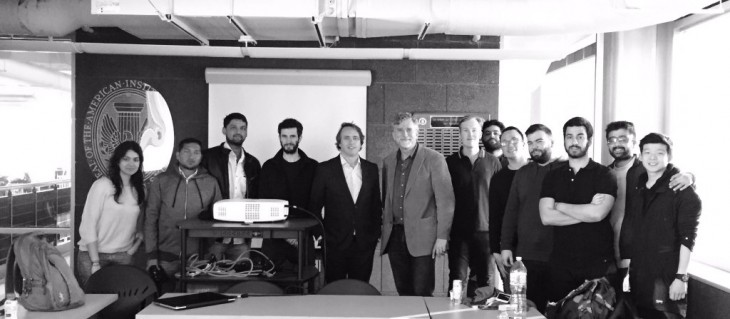Research Trips – Intelligent Cities
During the Intelligent Cities research trip to New York City, students have been able to investigate the particular conditions prevailing within the realms of the research line. This theoretical reflection has been implemented in a specific and extremely peculiar territory of the New York metropolitan area landscape: Newark.
Located in the heart of New Jersey‘s Gateway Region, Newark is the second-largest city in the New York metropolitan area, approximately 13 km west of Manhattan. Port Newark, the major container shipping terminal in the Port of New York and New Jersey, is the largest on the East Coast.
The area gave the students the opportunity to explore new urban tactics, paying close attention to emergent design processes associated with data collection, system optimisation with genetic algorithms, permutation of solutions through parametric systems and generative systems design language.
Along this trip, students have been confronted with iconic architectures such as the Sperone Westwater Gallery by Foster and Partners; The New York High Line by Diller Scofidio + Renfro; New Contemporary Art Museum by SANAA; New Amsterdam Pavilion by UNStudio; Seagram Building by Mies van der Rohe; Guggenheim Museum by Frank Lloyd Wright; Javits Convention Center by I.M. Pei; Lever House by Skidmore, Owings & Merrill and the Empire State Building by Shreve, Lamb, and Harmon among others.

Intelligent Cities research line works beyond the conventional scales of territorial design, town planning, building or fabrication in designing a multi-scale habitat. As in the design of ecosystems, each level has its own rules of interaction and relation, and at the same time must comply with certain parameters that pertain to the system as a whole. The Studio focuses on projects that range in scale from the territory to the neighborhood.
Learn more on Intelligent Cities research line by clicking here.